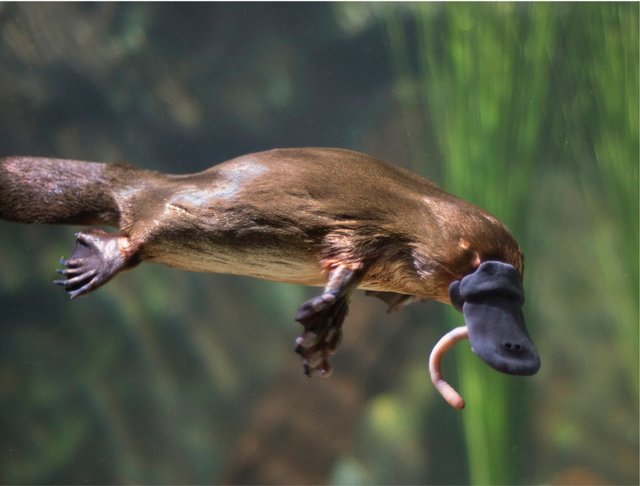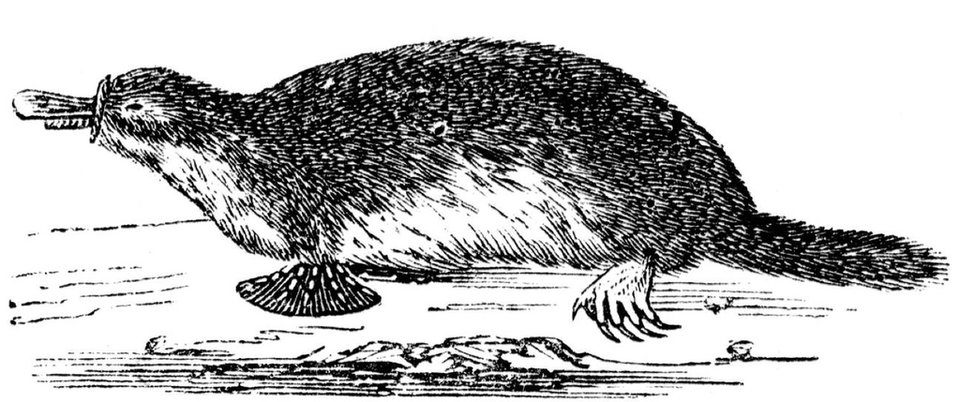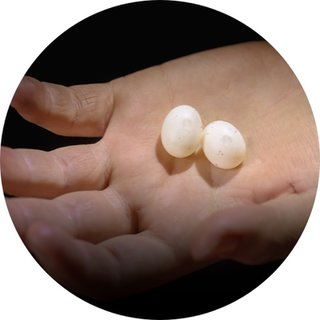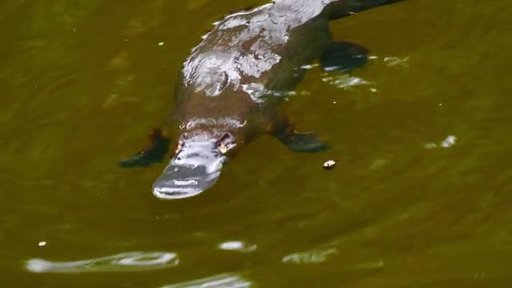Thesunpeeksthroughtheleavesontheriver’sedge.Awormwrigglesalongthemurkybottom.Itrestsunderapileofpebbles.Asthelightfades,thewormishiddenfrom sight.
Neartheriverbank,aweb-footedhuntercomesoutofitsden.Itpaddlesitspowerfulfrontfeet.Itzipsthroughthewater,hunting food.
Thisplatypus dives underwater.

Witheyesclosed,thisplatypusdivesunderwater.Itfindsatastywormto eat
Wavingitssnout,itpicksuponthemovementsoftheworm.Itopensitsmouth,scoopinguppebblesandtheworm.Atthewater’ssurface,itgrindsthemintomush.Thehunterswallowsthewormymush,dribbling stones.
Thispredatorisaplatypus.Itisoneoftherarestanimalsontheplanet.Platypuseshavespecialbodyfeatures.Thefeaturessetthemapartfromothermammals.Itstartsfrom birth.
PlatypusParenting
It’searlymorningontheriver.Aplatypususesherwebbedfrontfeettopaddletothebank.Shepullsherselfoutofthewater.Onland,shepullsinthewebbingonherfeet.Shewaddlestoherden.Inherburrow,shedigsanewchamberwithher claws.
Snoutfirst,sheentersthechamber.Shekickssoiltosealherselfinside.Shelaysoneegg.Then,another.Sheholdsthembetweenherbodyandtailtokeepthem warm.
Aftertwoweeks,theeggstear.Abean-size,pinkplatypushatchesfromeachegg.Theyarehairless,blind,andhelpless.Still,theyinchtowardtheirmother’sbelly,waitingtobe fed.
Thebabiessuckthemilkfromopeningsbetweenfoldsofthemother’sbellyskin.Whentheycanswimandeatbythemselves,theyarereadyforlifeontheir own.
Platypusesnursetheiryoungin burrows.
ThefirstplatypuswassenttoEnglandin1799.Mostscientiststhoughtitwasafake.Theythoughtsomeonehadsewntogetherbitsofanimalstoplayajoke.Howcouldamammalhaveabeak,webbedfeet,andlayeggs?Howcouldabirdhavefurandnursebabies?Becausetheplatypuswassounusual,noonecouldbelieveitwas real.


Platypuseggsarethesizeof marbles.
